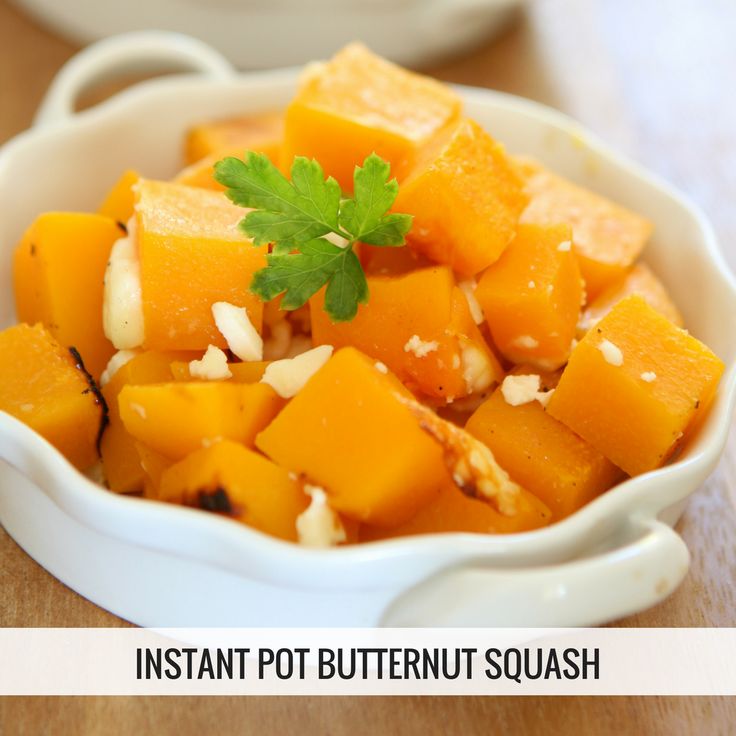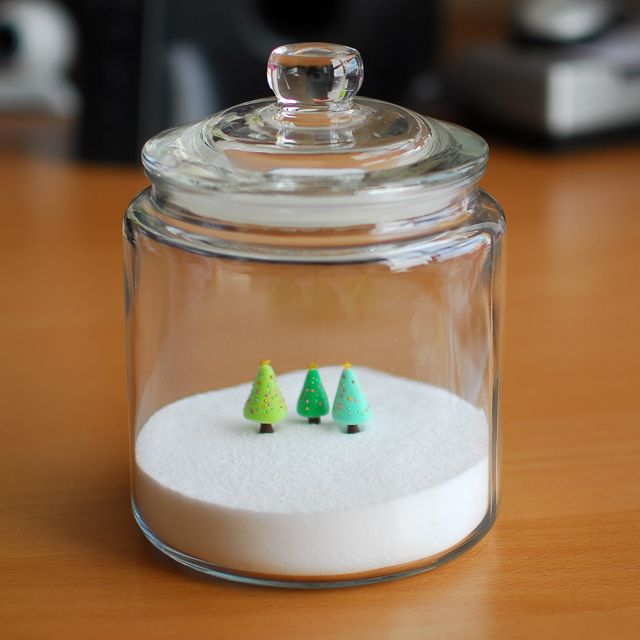How to make cantaloupe baby food
Cantaloupe for Baby (and Big Kids)
Learn safe ways to serve cantaloupe to a baby (and to toddlers) with this easy guide. With tips on how to cut cantaloupe easily, which shapes are easiest to eat, and how to choose a ripe cantaloupe.
Cantaloupe for Baby
A ripe cantaloupe is one of my family’s very favorite fruits. My kids even have a phrase for a really good one: “Cantaloupe heaven”. This fruit, which is a great source of hydration and Vitamin C, is a delicious side dish or snack to share with the kids from soon after they start solids.
Because many cantaloupes (and honeydew) can be a little firm, there are some basic guidelines to keep in mind when preparing them for a baby and toddler.
Below, I’ll share how to choose a cantaloupe, how to remove the skin and seeds, a few easy ways to cut them, and how to make a simple cantaloupe puree.
This info works for kids of all ages (and parents!) and is handy to save for peak melon season.
How to Choose a Cantaloupe
When choosing a cantaloupe, regardless of the variety, you want it to feel heavy for its size (which indicates a lot of juice), to have a slight give when you press on the base where the stem was removed, and to smell like a fragrant melon.
If a melon is rock hard and has no fragrance, it is less likely to have delicious flavor. If a melon is really soft and gives a lot when you touch it, it is likely overripe.
The skin of a cantaloupe should be fairly uniform, but sometimes there is slight discoloration on the spot it was sitting on the ground, which is fine.
How to Cut Cantaloupe Step-by-Step
This is how I prefer to cut a melon like a cantaloupe to share with the kids.
- Use a knife to cut the melon in half. This exposes the seeds. Use a spoon to remove the seeds and discard.
- Use a small knife to remove the skin. I hold the melon cut side down in one hand and use the other hand to gently remove the skin working around in a circle. You can also place the melon cut-side-down on the counter and remove the skin.
- Cut the half in half, then into slices.
- Or, you can use a melon baller to make round shapes for older kids. (You don’t have to peel it to use this method, though know it’s often hard to get all of the melon off the skin with a melon baller.

From there, you can slice the cantaloupe into matchsticks or into small diced pieces as you like.
Can a baby eat cantaloupe?
Yes, here’s how I prefer to offer this type of melon to kids according to their age:
- 6 months: Offer a large slice for baby baby-led weaning style. Make sure it’s ripe and not firm, to reduce the risk of choking. You can also blend fresh cantaloupe into a simple puree.
- 9 months: Offer small diced pieces as a finger food. (Again, make sure the melon is ripe and very soft.)
- 12+ months: Offer matchstick shape pieces of cantaloupe.
- 18+ months: Offer thicker slices for the toddler to take bites from.
How do I prepare cantaloupe for my baby?
You can offer a thick slice, cut it into small pieces, or puree it into a sort of juice, depending on the age of the child and your preference.
How do I give my 7-month-old melon?
For this age, you can offer a large slice for baby to gnaw on baby-led weaning. Make sure it’s ripe and not too firm, which reduces the risk of choking.
Make sure it’s ripe and not too firm, which reduces the risk of choking.
You can also blend fresh, ripe cantaloupe into a simple puree by adding pieces to a blender and blending smooth. Then you can offer it on a baby spoon or in a reusable pouch.
Can babies eat pureed cantaloupe?
Sure, pureeing ripe cantaloupe is an easy baby food option that can be served with a spoon or in a reusable pouch.
Best Tips for Success
- Be sure to start with a ripe, soft melon to reduce the risk of choking.
- Look for a melon that gives slightly at the base and smells fragrant.
- Offer cantaloupe to a 6-month-old baby as either a thick slice for baby-led weaning or as a puree.
- Offer cantaloupe to a 9-month-old baby, as long as the melon is very ripe and soft, diced into very small pieces.
- Offer it as matchstick-size pieces to a 12+ month baby, as long as the melon is very ripe and soft.
- Offer larger pieces, again as long as soft and ripe, to toddlers 18+ months.

- Save melon balls for older kids to reduce the risk of choking. They are a fun option for kids over about age 3 or 4.
- You can add fresh chunks of cantaloupe to a blender and blend smooth to make a fresh puree.
Related Recipes
I’d love to hear your feedback on this post, so please comment and rate it below!
Prep Time 5 minutes
Total Time 5 minutes
Author Amy Palanjian
Cuisine American
Course Snack
Calories 23kcal
Servings 8
- ▢ 1 cantaloupe
Cantaloupe Puree
Cut the melon in half. Scoop out the seeds with a spoon and discard .Use a knife to remove the skin. Roughly chop at least 2 cups of the melon. (You can eat the rest yourself or store it in the fridge for future use.) Add melon to a blender and blend smooth. Serve with a spoon or in a reusable pouch.
Sliced and Diced Cantaloupe
Cut the melon in half. Scoop out the seeds with a spoon and discard.
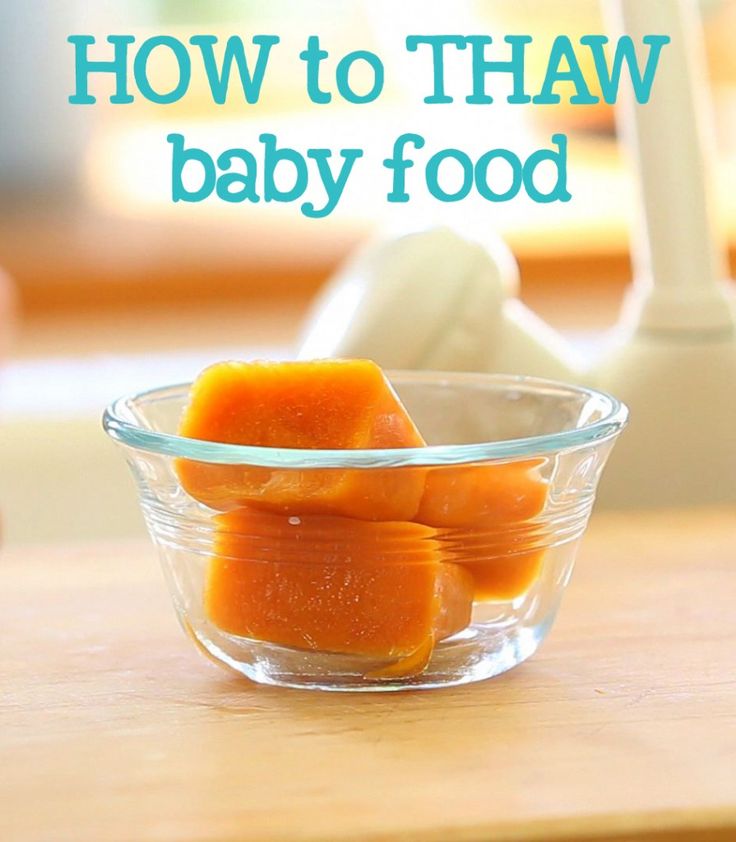 Use a knife to remove the skin. 6+ months: Serve a large slice for baby-led weaning. 9+ months: Serve the fruit diced very small. 12+ months: Serve cut into thin matchsticks. 18+ months: Serve as thicker slices.
Use a knife to remove the skin. 6+ months: Serve a large slice for baby-led weaning. 9+ months: Serve the fruit diced very small. 12+ months: Serve cut into thin matchsticks. 18+ months: Serve as thicker slices.
Storage Containers
Reusable Pouch
- Be sure to start with a ripe, soft melon to reduce the risk of choking.
- Look for a melon that gives slightly at the base and smells fragrant.
- Offer cantaloupe to a 6-month-old baby as either a thick slice for baby-led weaning or as a puree.
- Offer cantaloupe to a 9-month-old baby diced into very small pieces, as long as the melon is very ripe and soft.
- Offer it to a 12+ month baby, as long as the melon is very ripe and soft, as matchstick pieces.
- Offer larger pieces, again as long as soft and ripe, to toddlers 18+ months.
- You can add fresh chunks of cantaloupe to a blender and blend smooth to make a fresh puree.
- Store leftover melon or puree in an airtight container in the fridge for up to 5 days.
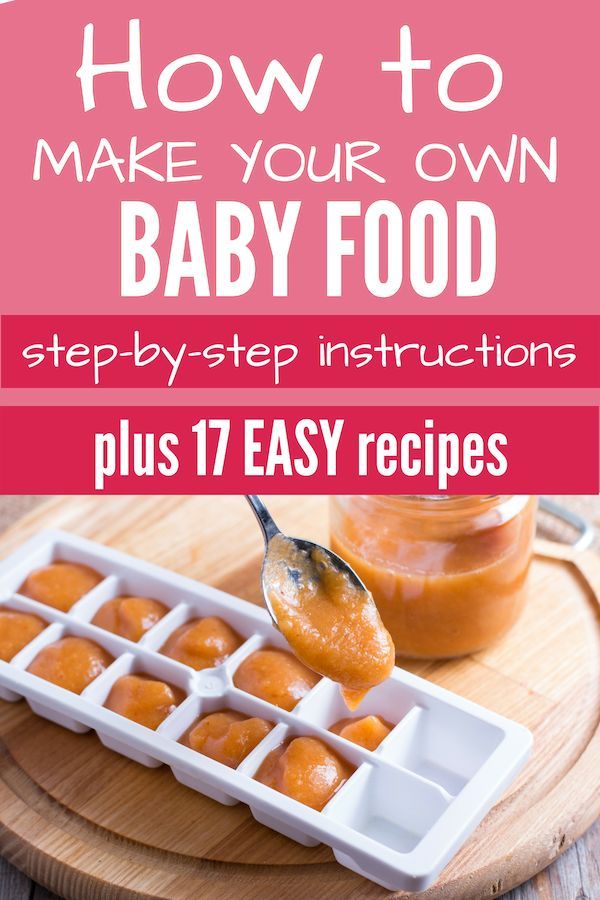
Serving: 0.25cup, Calories: 23kcal, Carbohydrates: 6g, Protein: 1g, Fat: 1g, Saturated Fat: 1g, Polyunsaturated Fat: 1g, Monounsaturated Fat: 1g, Sodium: 21mg, Potassium: 108mg, Fiber: 1g, Sugar: 5g, Vitamin A: 2334IU, Vitamin C: 8mg, Calcium: 6mg, Iron: 1mg
Tried this recipe?Rate in the comments and tag @yummytoddlerfood on IG!
How to Serve Cantaloupe to Baby
Learn how to prepare cantaloupe for your baby in 8 delicious and easy ways! As a deliciously sweet fruit, Cantaloupe and all other melons, can be served to babies 6 months and up. Serve them as a baby food puree, as a solid for the finger food stage or for baby-led weaning.
Medically reviewed and co-written by Jamie Johnson, Registered Dietitian Nutritionist (RDN), and Lauren Braaten, Pediatric Occupational Therapist (OT).
Cantaloupe for Baby
Looking to serve cantaloupe 🍈 to your baby, but not sure how?
Then this guide is for you!
In this guide, we will go over all the information you need in order to serve cantaloupe to your baby as a puree, as a finger food, or for baby-led weaning.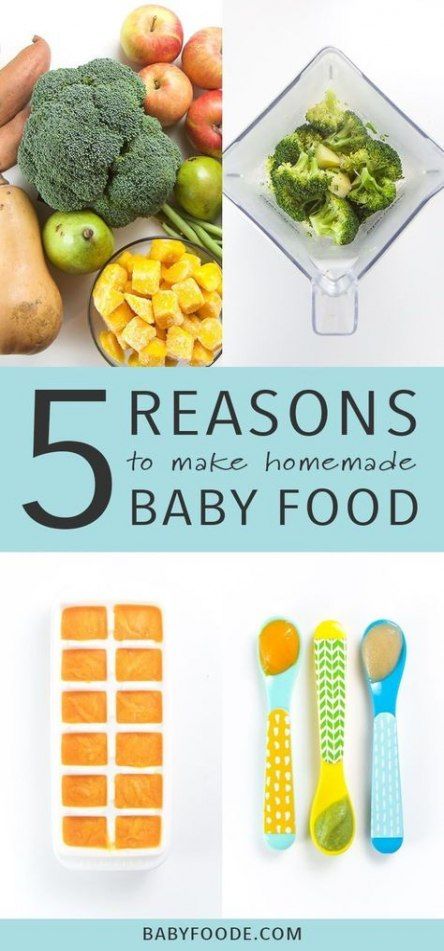 Below you will learn the benefits of cantaloupe for our baby, FAQs, how to select and store cantaloupe, as well as 8 delicious and easy recipes for you to try.
Below you will learn the benefits of cantaloupe for our baby, FAQs, how to select and store cantaloupe, as well as 8 delicious and easy recipes for you to try.
First time making homemade baby food? Then, I would suggest that you start by reading my very in-depth Guide on how to Make Homemade Baby Food – which goes over all the important information such as the best cooking tools to have on hand, safe storage, how to know when baby is ready for solids, how to introduce purees, the best first foods for baby, and more! If you are doing Baby-Led Weaning, then be sure to check out my Complete Guide to Baby-Led Weaning – which covers what exactly is baby-led weaning, to every parent’s concern of baby-led weaning and choking, this guide goes over it all. I will also share how to know when baby is ready for BLW, the top 10 best first foods, a helpful sample blw feeding schedule, helpful tools to have on hand, and much much more!
Want more information? Then make sure to check out my best-selling cookbook for even more information and recipes!
Cantaloupe for Baby Video
Watch this video to get some ideas on how to serve melon to your baby!
Reasons to Love Cantaloupe for Baby
- delicious baby food purees – 6+ months
- great for baby-led weaning – 6+ months
- also great for the finger food stage – 9+ months
- full of essential nutrients for baby
- different ways for baby to eat – spoon-fed or self-feed
- easy to make – no cooking required
- recipes are great for Honeydew, Cantaloupe and other varieties of melons
Nutritional Benefits of Cantaloupe
Melons are filled with a wide variety of nutrients for your baby;
- Contain potassium, an important electrolyte for maintaining fluid balance, muscle contractions and normal heartbeat.

- High in vitamin C, which supports the immune system and helps with iron absorption.
- Cantaloupe is an excellent source of vitamin A, which is necessary for healthy eyes and skin.
- High water content helps keep your baby hydrated and relieves constipation.
How to Pick a Ripe Cantaloupe
Here’s how to pick a cantaloupe that’s perfectly ripe and ready to enjoy:
- Weight: pick up the melon and hold it in your hands. If it feels heavy for its size, you have a cantaloupe that’s close to ripe.
- Touch: a ripe cantaloupe should have the right level of firmness. It shouldn’t be as hard as a watermelon, although too soft and it may be past its prime.
- Color: if the rind on your cantaloupe has a greenish hue, it likely needs a couple more days to ripen fully. But if the rind has a beige, pale yellow hue, it’s likely ripe and ready for eating.
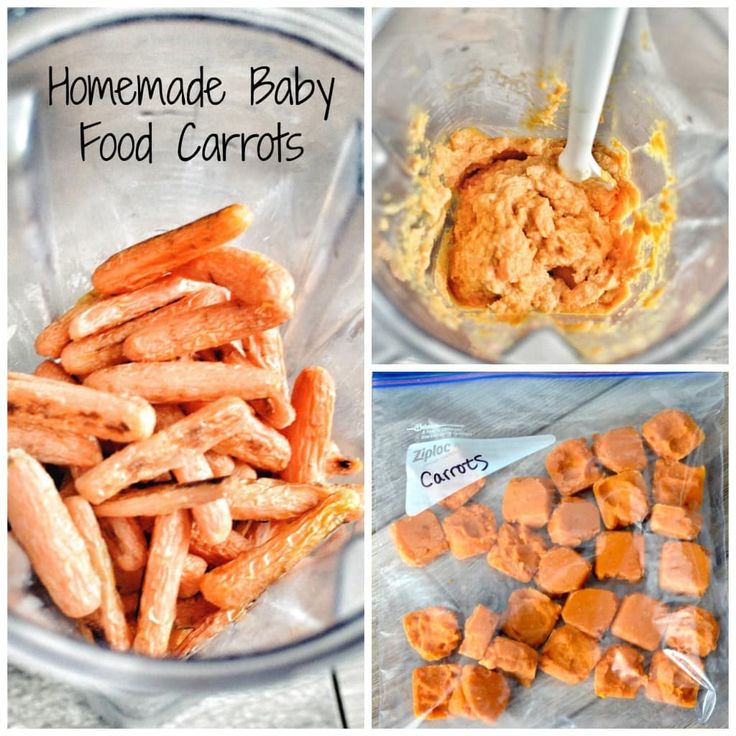
- Sound: give the melon a little shake. If it’s ripe, you should hear all those little seeds making a rattle.
- Scent: give it a quick sniff. Ripe cantaloupes should have a sweet, musky smell. If you don’t smell anything, it’s likely not ripe yet.
How to Store a Melon: You can store uncut, whole cantaloupe at room temperature for a couple of days. If you aren’t ready to cut your cantaloupe, you can store it in the fridge for about 5 days. If your cantaloupe isn’t ripe enough, you can keep it in a closed paper bag to accelerate the process.
Frequently Asked Questions
When can I introduce melon to my baby?
Whether you’re starting your baby on purees or are doing baby-led weaning, cantaloupe is a refreshing and enjoyable first food for your baby! When a baby can start on solids is determined by their own rate of development, which generally comes between 4-6 months of age for purees and or after 6 months for baby-led weaning.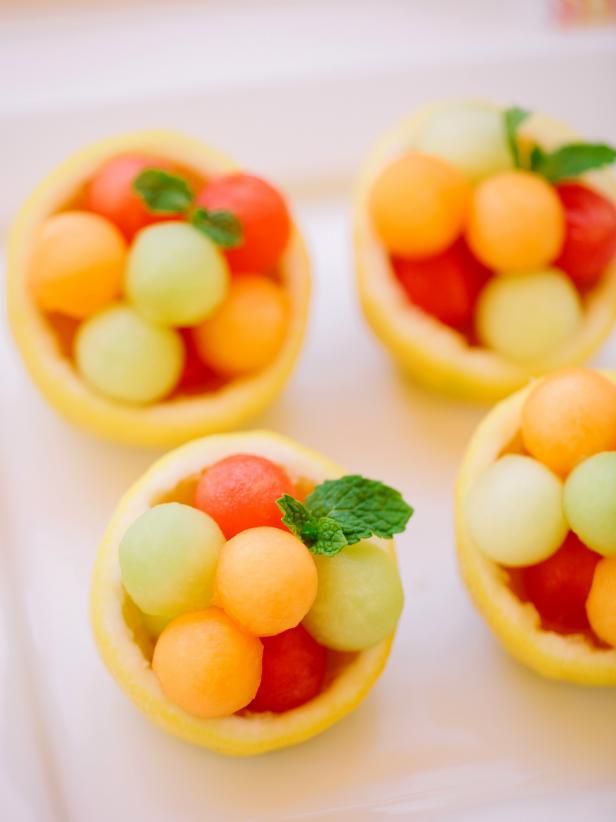 Some of the developmental milestones your baby needs to reach in order to start on solids include: if your baby has solid control of their head and neck, if your baby has doubled in weight, and if your baby is reaching for or opening their mouth when you eat (see my guide here). Before you start your baby’s feeding journey, you should consult with your pediatrician to make sure your child is developmentally ready.
Some of the developmental milestones your baby needs to reach in order to start on solids include: if your baby has solid control of their head and neck, if your baby has doubled in weight, and if your baby is reaching for or opening their mouth when you eat (see my guide here). Before you start your baby’s feeding journey, you should consult with your pediatrician to make sure your child is developmentally ready.
Is melon a choking hazard?
Yes, melon can be a choking hazard, especially when served in the form of melon balls. Always serve melon in an age-appropriate way.
Is melon a common allergen?
No, melon is not a common allergen; however, as with all foods, start with a small portion and be aware of any signs that may be an allergic reaction after introducing it.
Does melon cause constipation for babies?
Melon does not usually cause constipation in babies. In fact, due to its high water content, it can actually help relieve constipation.
In fact, due to its high water content, it can actually help relieve constipation.
Types of Melons
There are actually many different types of melons, including Winter Melon, Banana Melon, Canary Melon, and Galia Melon but the most common ones in the States are:
- Watermelon
- Honeydew
- Cantaloupe
These tools will make it a lot easier for you to serve melon to your baby. For more of my favorite kitchen tools, make sure to check out my shop.
- Blender or Food Processor
- Storage Containers for Fridge
- highchair
- bib with catch pocket
- Baby Bowls
- Suction Baby Plates
- Baby Spoons
- Freezer Storage Tray
- Gootensil
- Saucepan
- Baking Sheet
There are several different ways to prepare melon for your baby! You can make it into a smooth puree, a combination puree, a chunky puree for stage three, mashed and spread on toast or whole for baby-led weaning or a finger food. Here are 8 of my favorite ways to serve cantaloupe to baby:
Here are 8 of my favorite ways to serve cantaloupe to baby:
- Basic Cantaloupe Puree
- Cantaloupe Banana Yogurt Puree
- Cantaloupe Cauliflower Mint Puree
- Chunky Cantaloupe Tofu Puree with Mint
- Cantaloupe for Baby-Led Weaning or Finger Foods: thin strips, cut into small pieces or in a small wedge.
- Chunky Cantaloupe Tofu Puree with Mint
- Cantaloupe Lemon Popsicles for Baby
- Cantaloupe Smoothie
Basic Cantaloupe Puree
This simple, yet delicious stage one puree takes all of 60 seconds to make!
Instructions (for the full recipe, see recipe card below): blend ripe pieces of cantaloupe until smooth, pour into a bowl and serve. Due to cantaloupes’ high water content, this puree will be on the thinner side.
More Ways to Serve: you can serve this Basic Cantaloupe Puree with yogurt, mixed with apple, pear, or sweet potato puree, or swirled into oatmeal, quinoa, cottage cheese or ricotta.
Cantaloupe Banana Yogurt Puree
This super creamy and thick cantaloupe puree is another easy puree that can be made in minutes. It’s great for spoon feeding to your baby or served in a reusable pouch.
Instructions (for the full recipe, see recipe card below): place cantaloupe chunks, banana and yogurt into a blender and puree for 30-60 seconds or until smooth. Pour into a baby bowl and serve.
Cantaloupe Cauliflower with Mint Puree
A tasty way to incorporate cauliflower into a baby’s diet! Gently steamed cauliflower is paired with naturally sweetened cantaloupe and rounded out with fresh mint. You can also use basil or chives in place of the mint.
Instructions (for the full recipe, see recipe card below): steam some cauliflower until fork tender. Transfer to a blender, add cantaloupe and mint, and puree until smooth.
Transfer to a blender, add cantaloupe and mint, and puree until smooth.
Chunky Cantaloupe Tofu and Mint
Cantaloupe and tofu make a great team! Here we are roughly chopping both and pairing them with a sprinkle of chopped mint for an easy finger food for baby. You can use raw tofu or cook it lightly in a skillet before chopping and adding to the cantaloupe.
Instructions (for the full recipe, see recipe card below): on a cutting board, roughly chop some cantaloupe and sprouted tofu. Mix together and then sprinkle on some chopped mint or basil to the top.
Cantaloupe for Self Feeding
Cantaloupe is a good food for your baby to self-feed, whether for baby-led weaning, which happens around 6 months of age, or during the finger foods stage at 9 months.
Large Stick – 2 fingers wide (6+ months): great for babies 6+ months or just starting on solid foods. It’s best to start your baby with a bigger piece of cantaloupe, at least 2 fingers wide.
It’s best to start your baby with a bigger piece of cantaloupe, at least 2 fingers wide.
Chopped or Wedge (9+ months): when your baby’s pincer grasp has developed, you can serve chopped bite-size pieces of cantaloupe or a wedge to your baby.
Wedges or Smaller Sticks (12+ months): as your baby’s eating skills advance you can serve them wedges of cantaloupe so they can learn how to take a bite as well as smaller sticks.
Cantaloupe Lemon Popsicles
Want a fun way to serve cantaloupe to your baby on a hot day? Then try these Cantaloupe Popsicles! Made with only 4 ingredients; these popsicles will be a fun (if not a little messy) way for your baby to explore this popular fruit!
Instructions (for the full recipe, see recipe card below): blend cantaloupe, yogurt, lemon juice and sweetener (optional). Pour into small baby-friendly popsicle molds and freeze. Once frozen, take a popsicle out of the mold and hand it to your baby.
Cantaloupe Smoothie
Made with 6 simple ingredients – including one veggie – this smoothie is easy to make and even easier to drink! Great for 9+ months!
Instructions (for the full recipe, see recipe card below): place cantaloupe, frozen mango, frozen banana, frozen cauliflower, chia seeds and milk into a blender and puree until creamy. Pour into a baby-safe cup and serve.
Tips for Feeding Melon to Baby
- Buy whole melon instead of pre-cut and always wash before cutting to reduce the risk of salmonella.
- Pick a cantaloupe – by choosing a firm and symmetrical melon that is free from bumps, cuts, and dents.It should feel heavy in your hands and have a sweet scent.
- Wash First: Make sure you wash and dry your watermelon for cutting into it.
Or watch the shortened video here.
Basic Cantaloupe Puree
- 2 cups cantaloupe, peeled, deseeded and roughly chopped
Cantaloupe Banana Yogurt Puree
- 1 cup cantaloupe, peeled, deseeded and roughly chopped
- 2 medium bananas, ripe
- 1/2 cup plain whole milk yogurt
Cantaloupe Cauliflower Mint Puree
- 1 cup cantaloupe, peeled, deseeded and roughly chopped
- 2 cups cauliflower
- 2 mint leaves
Chunky Cantaloupe Tofu and Mint
- 1/4 cup cantaloupe chunks
- 1/4 cup sprouted tofu
- 2 mint leaves, finely chopped
Cantaloupe for Self Feeding
- 1 slice cantaloupe
Canaloupe Lemon Baby Popsicles
- 2 cups cantaloupe
- 3/4 cup plain yogurt
- 2 tbsp fresh lemon juice
- 2-3 tbsp agave nectar or maple syrup (optional)
- 1 cup strawberries (Optional)
Cantaloupe Smoothie
- 1 cup cantaloupe
- 1/2 cup frozen mango
- 1 medium banana, preferable frozen
- 1/4 cup frozen caulilfower florets or califlower rice
- 1/2 tsp chia seeds (optional)
- 2-3 tbsp honey (over 1 year), maple syrup or agave nectar (optiona)
- 3/4 cup milk, regular, almond, soy, cashew, oat, etc.

Basic Cantaloupe Puree
Place the cantaloupe into a blender.
Puree on medium speed for 10-20 seconds or until smooth.
Serve and enjoy!
Cantaloupe Banana Yogurt Puree
Place the banana, cantaloupe and yogurt into a blender.
Puree for 30-60 seconds or until smooth.
Serve and enjoy!
Cantaloupe Cauliflower Mint Puree
In a medium saucepan, bring 2″ of water to a boil over medium heat. Place the cauliflower into a steamer basket, cover and cook for 9-11 minutes or until tender. Reserve steamer water. Let cool slightly.
Place the cauliflower, cantaloupe and mint into a blender and puree for 1-2 minutes on medium-high or until smooth.
Serve and enjoy!
Chunky Cantaloupe Tofu and Mint
Place cantaloupe and tofu on a cutting board and finely chop into very small pieces.
Transfer the cantaloupe and tofu to a small bowl and add in mint, mix until incorporated.
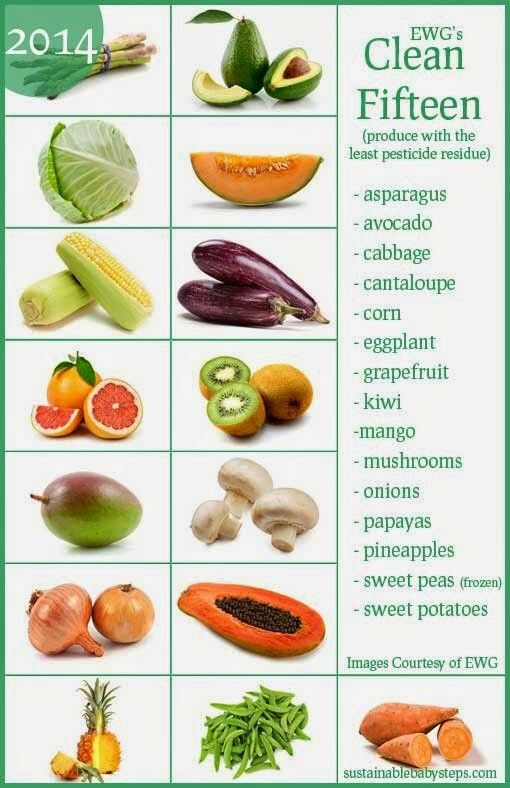
Serve and enjoy!
Cantaloupe for Self Feeding
Serve to your baby in thick sticks, chopped, as a wedge, on the rind, or in small sticks depending on your baby's age (see graph).
Cantaloupe Lemon Popsicle
Place the cantaloupe, yogurt, lemon juice, sweetener (if using), and the strawberries (if using) into a blender and blend on medium-high speed puree the cantaloupe mixture for 1-2 minutes or until the mixture is completely smooth.
Using your favorite popsicle mold, pour the cantaloupe mixture into the molds until the fill line. Place in the popsicle sticks.
Place the popsicle mold into the freezer and let freeze for at least 5 hours but preferably overnight. Once frozen, take a popsicle out of the freezer and take out of the mold. Eat and enjoy.
Creamy Cantaloupe Smoothie
In a blender add in the cantaloupe, mango, banana, cauliflower, chia seeds, honey (over 1 year) and milk.
 Turn the blender on and blend for 1-2 minutes or until completely smooth.
Turn the blender on and blend for 1-2 minutes or until completely smooth.Once blended, pour into a small cup with a lid and serve.
Age: 4-6+ months for puree, 6+ months for baby-led weaning.
Storage: you can store the purees in the fridge for up to 4 days or in the freezer for 4 months. You can store the finger foods in the fridge for up to 3 days.
Yield: the purees will yield you roughly 6-8 ounces of puree, while the finger foods will give you 1-2 servings.
Blender
Freezer Tray
NumNum Pre-Spoon GOOtensils
Bumkins Baby Bowl
Kids Glass Cups
Did you make this recipe?
Tag @babyfoode on Instagram and hashtag it #babyfoode!
Pin Recipe Email a Friend
Baby puree at home: recipes
Baby puree from vegetables and fruits at home: cooking secrets
Vegetable and fruit puree often becomes the first meal of the baby after breast milk or formula, so many mothers prefer to cook it on their own. Although modern manufacturers convince us that baby food is devoid of preservatives and harmful additives, fresh vegetables and fruits are much healthier, especially when it comes to infant nutrition. Yes, and cooking baby puree at home is not so difficult. nine0005
Although modern manufacturers convince us that baby food is devoid of preservatives and harmful additives, fresh vegetables and fruits are much healthier, especially when it comes to infant nutrition. Yes, and cooking baby puree at home is not so difficult. nine0005
Vegetables or fruits?
Let's try to make baby puree for our beloved baby. Despite the fact that pediatricians of the last century recommended starting complementary foods with fruits, it is better to first introduce the child to vegetables - modern doctors and nutritionists have come to this conclusion. Boiled vegetables do not irritate the gastrointestinal tract, are better absorbed, satisfy hunger, do not cause allergies and increased gas formation. In addition, vegetables do not contain fructose, which irritates the pancreas. And one more weighty argument in favor of the fact that it is better to start with vegetables - fruits are tastier, and if the baby tries them first, he will refuse vegetables, because they will seem to him more insipid. nine0005
nine0005
How to prepare baby vegetable puree
What can baby puree be made from? The ideal puree for the first feeding is from cauliflower or zucchini. A little later, you can introduce pumpkin, broccoli, carrots, potatoes and green peas. Before cooking, vegetables are washed well, peeled, cut into pieces and cooked - steamed, in the oven or in the usual way, in water. The first two methods are preferable because oven roasting and steaming preserve the vitamins, minerals, nutrients, and natural color in the vegetables. And most importantly - such vegetables are much tastier. Some nutritionists recommend boiling vegetables with their skins on before peeling them, so choose your own cooking method. nine0005
If you do have to cook vegetables in a saucepan, use an enamel pot, add less water and put the vegetables in boiling water. Boil until soft, but do not overcook vegetables and fruits, otherwise they will become tasteless and lose a lot of vitamins. Ready vegetables are chopped with a blender until smooth and slightly diluted with water, vegetable broth, breast milk or mixture to a gruel state, since the child does not yet know how to digest thick food. Small pieces of vegetables in puree sometimes cause the baby to refuse to eat, so the knives in the blender should be well sharpened, and if there is no technique, you can grind the vegetables through a sieve. Salt and spices are usually not added to baby vegetable puree, and if the baby is more than 6 months old, you can put a little butter in the puree. nine0005
Small pieces of vegetables in puree sometimes cause the baby to refuse to eat, so the knives in the blender should be well sharpened, and if there is no technique, you can grind the vegetables through a sieve. Salt and spices are usually not added to baby vegetable puree, and if the baby is more than 6 months old, you can put a little butter in the puree. nine0005
A few rules for making baby puree at home
- Use only fresh vegetables and fruits.
- Water for cooking vegetables must be filtered or bottled.
- If you are using frozen foods, choose only whole fruits and vegetables as they retain the most nutrients.
- All utensils for preparing baby food should be perfectly clean, so if the knife falls on the floor, it should be washed well. Also, the presence of pets in the kitchen during the cooking process is not allowed. nine0026
- Avoid vegetables and fruits high in nitrates, such as spinach, lettuce, beets, melons, and watermelons, in infants' diets.

- Store-bought vegetables are recommended to be soaked in water to remove nitrates: 1-2 hours for this, up to 24 hours for potatoes.
- Mix sour-tasting fruits and berries with sweet fruits - for example, blackcurrant goes well with a banana or pear. Sour puree is unlikely to please the baby. nine0026
- Give your child only fresh food, but yesterday's puree from the refrigerator is better to eat yourself.
DIY fruit puree for children
Children are more likely to eat fruit puree, because fruits are tastier and sweeter. Fruits contain a large amount of vitamins, minerals, trace elements, fiber and antioxidants, so they are very useful for a growing organism. However, fruits are strong allergens, especially berries, bananas, pomegranates and apricots, so they should be given with caution, watching the child's reaction. The most low-allergenic fruits are apples and pears, so it is better to start complementary foods with them, and then introduce all other fruits.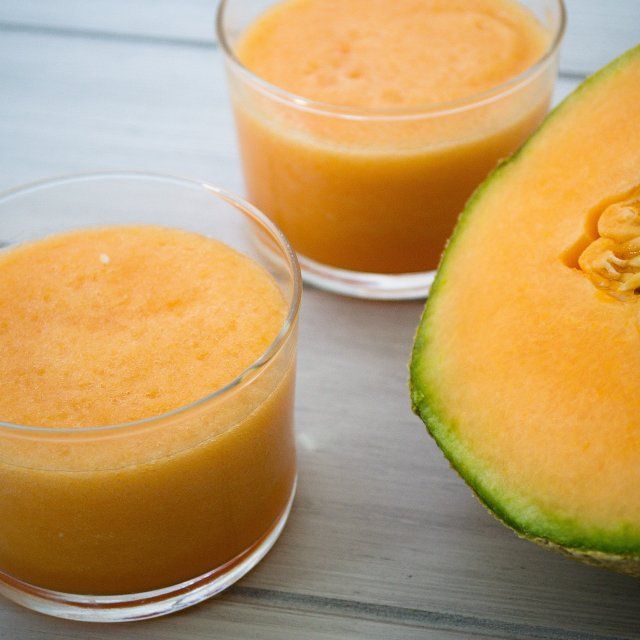 First, the baby is fed with a one-component puree made from only one product, and then you can mix different vegetables and fruits, and not only among themselves. Very tasty combinations of fruits and vegetables, such as apples and zucchini, pumpkins and pears. nine0005
First, the baby is fed with a one-component puree made from only one product, and then you can mix different vegetables and fruits, and not only among themselves. Very tasty combinations of fruits and vegetables, such as apples and zucchini, pumpkins and pears. nine0005
Fruits must be of good quality, without damage, ripe and juicy, and the rules for preparing fruits do not differ from the rules for cooking vegetables. Naturally, fruit puree is not sweetened with honey and sugar - the later the child learns the taste of sugar, the stronger his health will be.
Aromatic pumpkin puree
Babies love to eat pumpkin because of its pleasant sweet taste, besides pumpkin is very healthy. It contains a whole storehouse of various vitamins, including vitamin T, which normalizes the metabolism in the body. For pumpkin puree, small pumpkins are suitable, since large fruits are not as tasty and difficult to peel. nine0005
Cut the pumpkin in half, and then into small slices, one or two of which (depending on the appetite of the crumbs) cut into cubes. Boil the pumpkin in a double boiler or in water for 20 minutes, while warm, beat with a blender to a smooth puree and dilute if necessary with water or a mixture. Add oil and salt depending on the age of the child.
Boil the pumpkin in a double boiler or in water for 20 minutes, while warm, beat with a blender to a smooth puree and dilute if necessary with water or a mixture. Add oil and salt depending on the age of the child.
Gentle Broccoli Puree
One of my favorite homemade baby puree recipes is broccoli. This cabbage is extremely useful because it contains potassium, iron, calcium and other valuable substances. It has much more vitamin C than lemon, and the reasons for its nutritional value are its high protein content. nine0005
Separate the broccoli into florets, wash thoroughly and steam for 20 minutes. Cabbage cooks faster in water - fresh broccoli will take 7 minutes, and frozen - about 15 minutes. Broccoli puree does not need much water, it should lightly coat the vegetables. After the cabbage becomes soft, chop it in a blender or pass through a sieve. If you're mashing for kids older than a year old, be sure to add butter - the little ones will gobble up broccoli on both cheeks! nine0005
How to make baby pear puree at home
Pear is a very delicate, tasty and healthy fruit that rarely causes intolerance. In addition to the high vitamin value, the pear has other beneficial properties - it facilitates digestion and removes toxins from the body.
In addition to the high vitamin value, the pear has other beneficial properties - it facilitates digestion and removes toxins from the body.
For baby food, choose green pears to reduce the risk of allergies, which are rare among babies. Peel the fruits from the peel and core with seeds, and then stew the pear in a bowl with a thick bottom in a small amount of water for 15 minutes. Let the pear cool slightly and puree it in a blender with a little of the remaining pear broth. For large kids, fruits can not be boiled, but add half a teaspoon of natural honey to the puree. nine0005
Zucchini and apple puree
Little gourmets will love this delicious puree, besides, zucchini is considered the most hypoallergenic vegetables, which, due to their high potassium content, have a beneficial effect on the heart. Apples contain iodine, iron and phosphorus, and due to the high concentration of vitamin C, apples help in the prevention of colds and viral infections.
Wash the zucchini and apples well, de-seed them, cut into pieces and cook in a saucepan for about 20 minutes, considering that the zucchini will cook 5 minutes faster. By the way, apples are steamed for 15 minutes, zucchini - 10 minutes. Next, vegetables and fruits are chopped in a blender, mixed and brought to a boil. For allergic children, this is the best side dish! nine0005
By the way, apples are steamed for 15 minutes, zucchini - 10 minutes. Next, vegetables and fruits are chopped in a blender, mixed and brought to a boil. For allergic children, this is the best side dish! nine0005
Exotic mango
Sometimes you can pamper your baby with exotic fruits - for example, make mango puree. This is a very delicate fruit with an original taste, containing 12 amino acids and improving sleep.
Choose only ripe fruits that are soft and reddish-yellow in color. Peel the mango from a thick skin and a large bone, put the pulp in a blender, add 2 tbsp. l. water and mash it, and then heat it in a saucepan for several minutes. For a baby up to a year old, it is better to give mashed potatoes with heat treatment to facilitate digestion, and older children can be fed raw mangoes. nine0005
Carrot and Potato Puree
Make normal potato puree without oil. Peel the carrots, grate them and stew them with butter and vegetable broth - about 1 tsp is required for 200 g of carrots. butter and 150 g of broth. When the carrot becomes very soft, wipe it through a sieve, and then put it on a plate, put mashed potatoes on the second half. Let the child choose whether to mix two types of puree for him or eat separately!
butter and 150 g of broth. When the carrot becomes very soft, wipe it through a sieve, and then put it on a plate, put mashed potatoes on the second half. Let the child choose whether to mix two types of puree for him or eat separately!
Pumpkin and apple puree
This sugar-free sweet pumpkin-apple puree made in a double boiler is suitable for children who are already accustomed to "adult" food and are able to perceive a new unusual dish. It is better to take a pumpkin with a gray or green skin and with bright pulp - such fruits contain more vitamins and other useful substances. Apples are green because they have fewer allergens.
Cut pumpkin and apple flesh without peel or seeds into pieces, place in a double boiler and cook for 20 minutes. Grind pumpkin, apples and raisins in a blender or by hand with a pusher if the child has already learned to chew. They say that this puree is very good for skin and hair, and you can check the truth of this statement yourself if you start feeding your baby with this dish. nine0005
nine0005
In autumn, you can take care of preparing vegetables for baby purees. Some vegetables, such as pumpkin, carrots and apples, are stored fresh, and zucchini, broccoli, berries are frozen in small portions, because due to frequent freezing and thawing, vegetables lose vitamins and become tasteless. You can roll up fruit and vegetable puree in jars, but this snack should not be given to babies. Remember that the taste of vegetables determines whether the baby will love them in the future, so try to prepare an appetizing and tender puree - for health and good mood! nine0005 90,000 cantalupa (musky, American or Thai melon) - benefits and harm, use in cooking
Content
- 1 Description
- 2 Useful properties
- 3 Use in cooking
- 4 Benefits of the cantalup and treatment
- 5 The harm of the cantalupa cantalup and contraindications
- 5.1 Similar foods
- 5.2 Nutritional value
- 5.3 Vitamins
- 5.
 4 Minerals
4 Minerals
Calories: 34 kcal. nine0005
Energy value of the product Cantaloupe:
Proteins: 0.84 g.
Fats: 0.19 g.
Carbohydrates: 7.26 g. This type of melon is also called "musky", "Thai" and "American". To date, a large amount of cantaloupe is grown in Thailand.
The fruits look like this: they are covered with a dense striped peel and have an oval shape (see photo). In length, such melons reach an average of about 20 cm. Under the yellow-green skin with a kind of brown “mesh”, there is a juicy pulp of bright orange color. nine0005
This plant is native to India and Guinea.
Useful properties
Useful properties of such a melon are possible only due to its diverse vitamin and mineral composition. So, the composition of cantaloupe includes a large amount of ascorbic acid, which has a positive effect on the state of immunity and helps the body fight various infections and viruses. The fruits also contain inosine, which resists hair loss, and does not allow fat and cholesterol to accumulate in the body. nine0005
nine0005
This type of melon is the leader in the content of carotene, which is simply necessary for the human body.
There is folic acid in cantaloupe, which is very necessary for pregnant women, and therefore, during the period of bearing a child, such fruits will be very useful.
This melon is quite popular in cosmetology, because the pulp contains silicon, which has a positive effect on the condition of hair and skin.
Cantaloupe contains fiber, which has a positive effect on the digestive system and helps prevent constipation. In addition, it absorbs toxins and decay products, and then removes them from the body. nine0005
Culinary uses
Cantaloupe is most often eaten fresh, although it is also used in cooking for a variety of dishes. So, they add it to various desserts, fruit and vegetable salads, and also use it as a filling for baking. Also, honey is made from the fruits, which is called bekmes. In addition, cantaloupe is used to make sweet and fragrant marmalade, candied fruit, jam.

